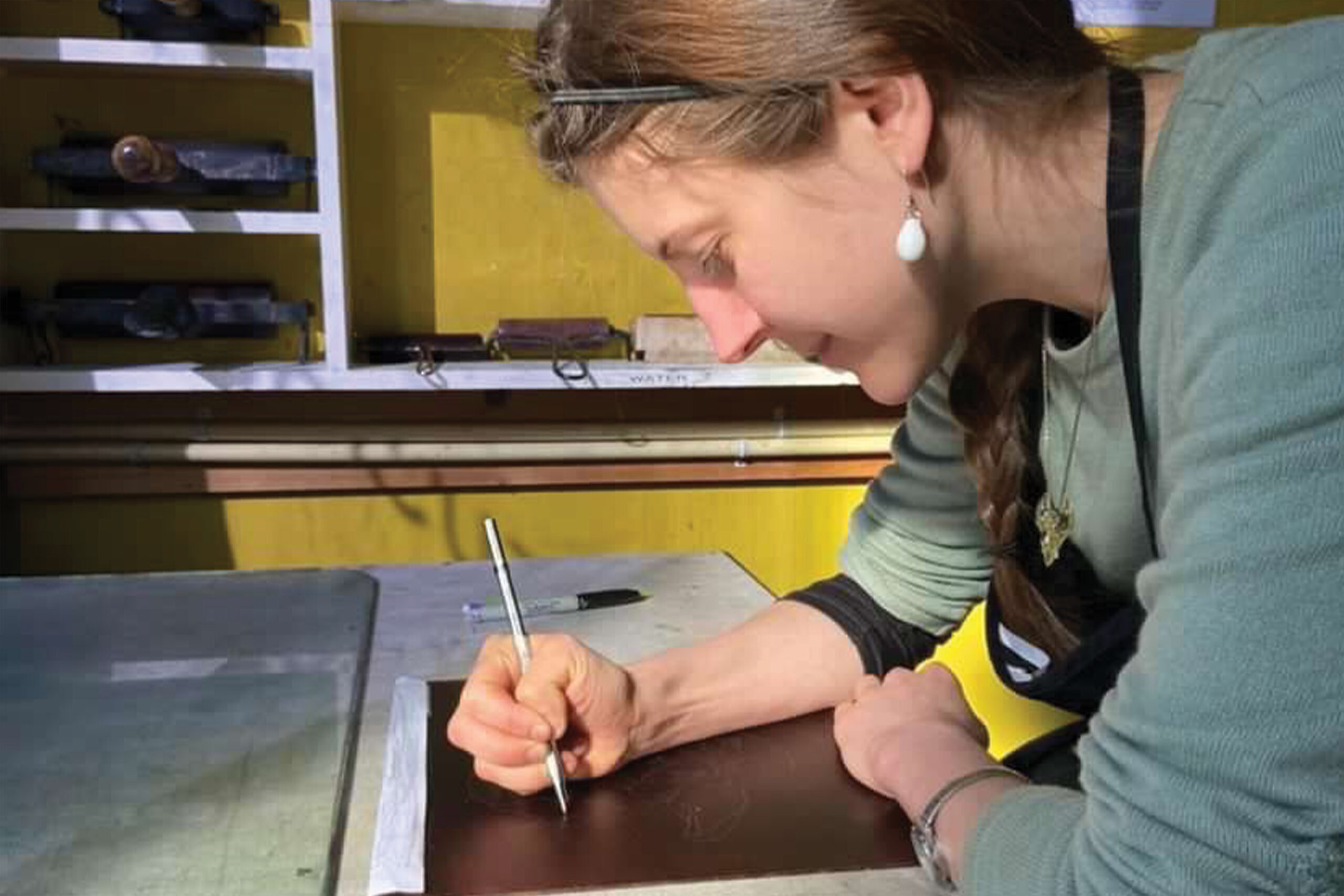This Spring, Rachel Singel was Artist in Residence for a month. Rachel is Associate Professor at the University of Louisville, where she has her own paper-making facility and teaches students about non-toxic etching. We talked about her time at AGA LAB, what inspires her, and her work process:
What were your expectations or what did you hope to find during your residency at AGA LAB?
‘Learning to use non-toxic methods has been great, but it’s been different in the sense that I’ve been working with hard ground. What I learned is that ‘non-toxic’ is a deceiving term because it’s about working less toxic. That’s something I’ve always known, but it’s more of a realization that there are some limitations to going completely non-toxic. For example, I can only bring a certain amount of liquid on a plane. I did work with acrylic grounds when I was at Wharepuke Print Studio in New Zealand, but I haven’t been able to find acrylic grounds in the Netherlands locally. So I have been using traditional grounds.’
‘Once I figured out my bike I was able to get out and see different plants and the Hortus Botanicus in Amsterdam. That is the best place in the entire world! I mean there are great places but Wow! What a gold mine of plants. I am so happy I was able to get there because that was truly special. I did a tulip after the magnolia because tulips are everywhere! That’s pretty amazing.’
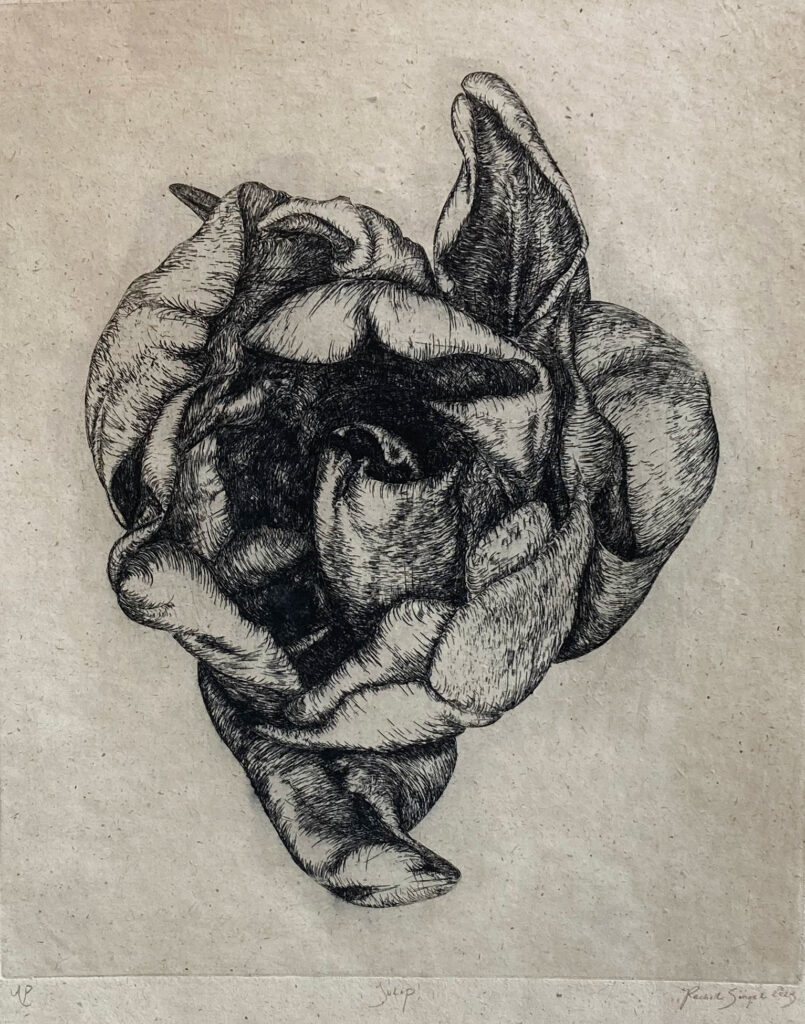
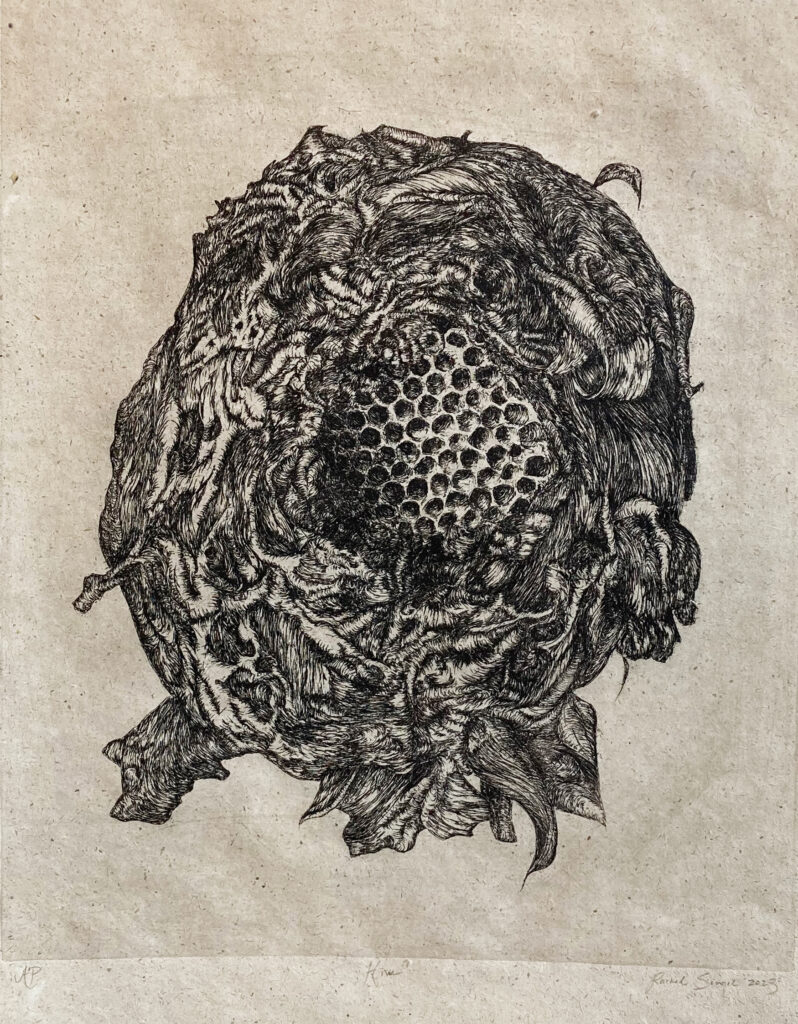
Did your interactions with other AiRs or artist working at AGA LAB influence your process, perspective or work?
‘I have found the other artists in residence with you are a huge influence. You are here to make art, but you are also living in a new place. Esra (Sakir) was kind enough to help me figure out my bike, help me find a store with my bike and Dana (Slijboom) helped me with biking, as well.
‘When we had our first Artist Talk, I was so excited to see Linda (Hang)’s work. She is from California and has met Amy Lee who is one of my heroes in papermaking. Lee has written one of THE books on papermaking with invasive plants. I am in awe of Linda’s work with books and letterpress and her craft. I find her work very inspirational.’
You grew up on a farm in Virginia. Does this have any influence on your work?
‘Growing up on a farm, being around natural forms, I have always been so amazed and impressed by nature. Growth is so incessant: nature always wins. In the sense that, we are pretty hard on it, but it is still such a force. It’s very fragile, but at the same time so epic.’
‘Nature is a limited resource. I want to be an artist, but I don’t want to destroy nature making my work. Especially as a teacher I think it’s important to learn less-toxic methods, because I am teaching 60+ students every year. I’m making my shop saver, helping to make my students and myself healthier, and reducing my environmental impact. It’s the future, it’s imperative.’
‘I love natural forms, particularly circles and voids. Forms such as pinecones and unfurling ferns that that have an inner design, the golden ratio, but then there’s variation based on outside forces like wind and erosion. I’m drawn to these things that have a fundamental structure. I can draw forever and never capture the amount of complex detail that’s there. I am drawn to the contrast between nothingness and everything. The mystery of black nothingness surrounded by this complex form I think is a beautiful thing.’
‘I talk about concepts and ideas but when it comes down to it, I am just so happy when I draw and get to make marks on a plate. My professor in printmaking Dean Dass would always quote Elizabeth King: ‘Process saves us from the poverty of our intentions.’ I appreciate that sentiment because sometimes something does not turn out exactly the way you wanted and it can be very frustrating, but it pushes you. I think it’s great to have things you don’t expect sometimes and you have to troubleshoot. You don’t grow without struggle.’

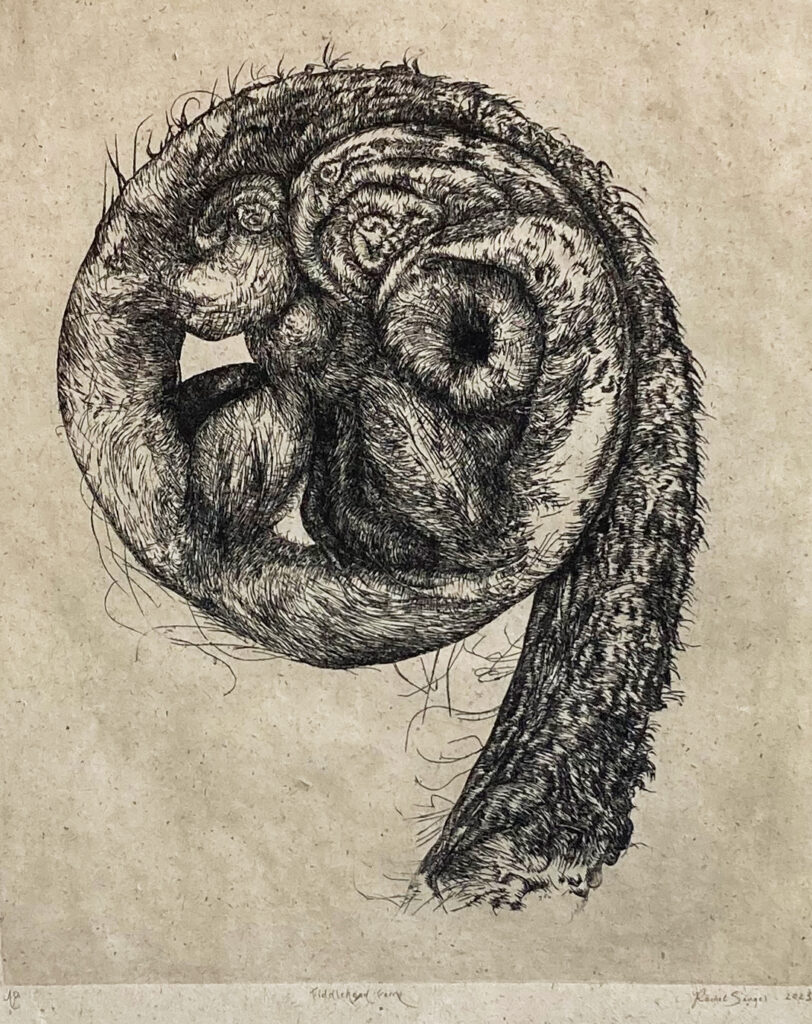
Can you tell us about some of the challenges you faced?
‘I make my own paper. Recently I have been using invasive plants because I find it to be ecologically friendly. Making your own paper can also be financially helpful. I’m trying to improve my papermaking facility because I feel like paper shouldn’t be so precious, you should be able to make prints and not beat yourself up when it doesn’t go so well.’
Was there anything different about your work routine from your normal way of working?
‘It’s so nice to just be able to get up and walk into the studio. I mentioned I bike to work every day, but it does make a difference when you can just get up and walk across the room to the studio, it makes the commute very convenient.’
‘The limited amount of time changed the way I worked here as I also wanted to do a show with four to five pieces in it. So, I had to speed up my process. At home, I have plates that I printed so much that they have started to fade. And I’ve recoated them and worked back into them. I love the fact that you can keep working on a plate. There is a saying: “As long as there’s copper, there’s hope.”
‘I’ve been able to make more work here than I have in the last two years. I always felt like work is – maybe because it’s so much fun – something too good to be true. Like it should the last thing. That has always been my mentality, and somehow flipping that switch is still hard for me. With a residency where you have an end goal – in this case the show – it really does help motivate you.’
‘Because of this limited time, the presentation is an in-progress show, a presentation of what I will hopefully continue to develop.’
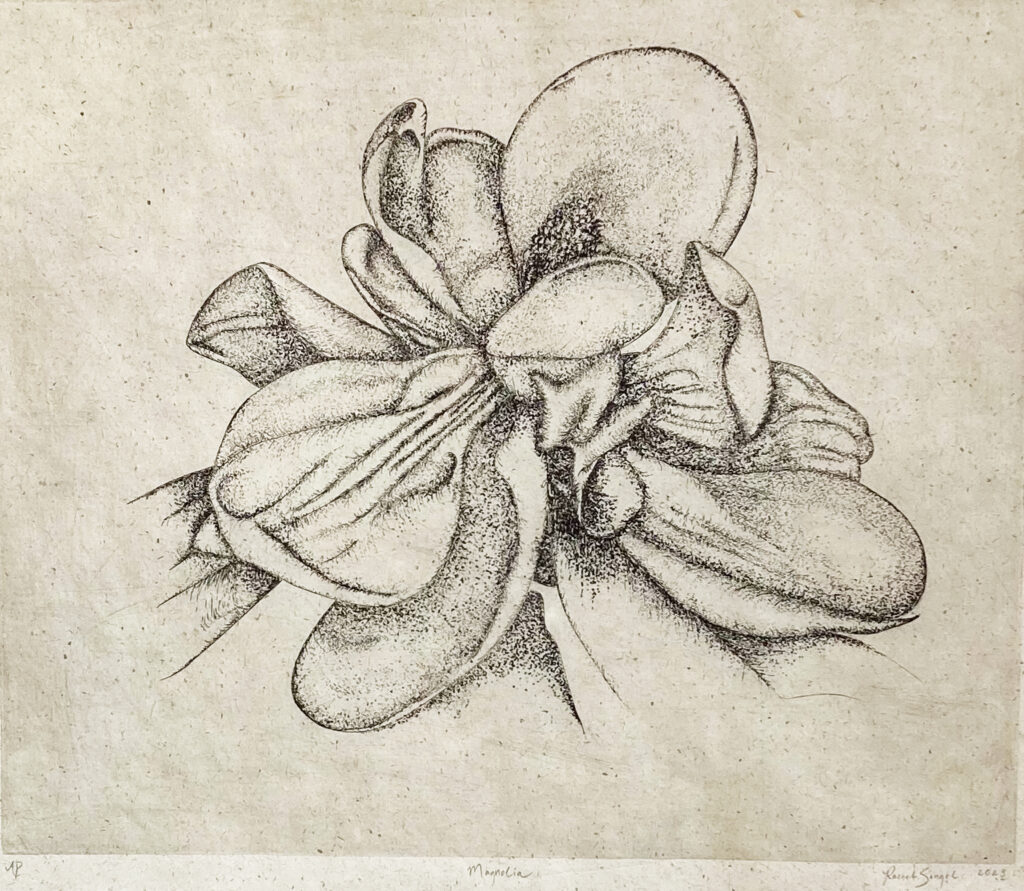
More work of Rachel Singel can be found on:
@rachelsingel
&
www.rachelsingel.com

